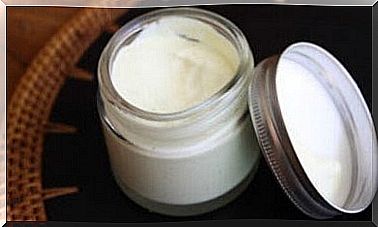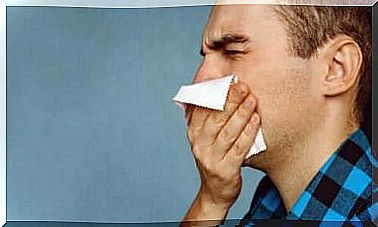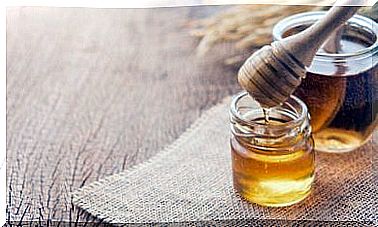Solar Erythema: Recommendations And Care
Solar erythema is particularly visible during the summer period, when the sun’s radiations are more intense. At this time of year, people are also more exposed and tend to protect their skin less. In this article, we tell you how to take good care of yourself.
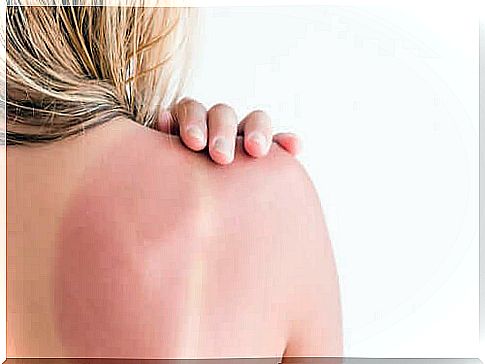
Solar erythema is a burn that appears after exposure to the sun. We suffer from it when we submit to ultraviolet radiation for a long time. Usually, the more intense symptoms appear within the first 24 hours and then begin to subside.
What is called solar erythema is a set of burns to a different degree. There are slight lesions, with only a peeling of the superficial layer of the epidermis. However, in other cases, the burn removes part of the skin and generates blisters.
In either case, the affected area turns red from the blood congestion. Inflammation is not always present, but it can happen that the flow of fluids in the tissues increases its volume.
As we have said, solar erythema is caused by the action of ultraviolet rays from the sun. Although there are different wavelengths in the sun’s rays, the radiation that most affects the skin is UVB and UVA.
UVA radiation is very penetrating, and can reach the dermis, which is located below the epidermis. Its negative effect manifests itself in the long term. It accelerates cellular aging and promotes the development of skin cancer.
On the other hand, UVB radiation is directly responsible for solar erythema. The skin tans and is burnt by this radiation. UVB can also modify cells by making them carcinogenic. This is why these two radiations are a risk factor for cancer.
Groups at risk for solar erythema
We can all suffer from solar erythema if we expose ourselves badly to the sun’s radiation, during bad hours and without protection. Also, some groups of the population are more prone to suffer from these burns, here are some of them:
- Those who have to work in homeless places at noon
- The people with very fair skin
- Those who do water or mountain sports, because the reflection of water or snow can burn with the same intensity as direct light
- Residents of tropical areas, where the sun’s path is more perpendicular to the earth and where the radiation time slot is longer
- Patients taking certain antibiotics, such as doxycycline
- Chronic patients with autoimmune pathologies with skin involvement, such as lupus

What to do if you have solar erythema?
Once the solar erythema is found, steps should be taken to relieve the injury. A medical examination is usually not necessary in these cases. However, if you have any doubts about the development of the burn, it is better to consult.
If we know that we have been exposed to the sun a lot and see the erythema appearing, we should shower in cold water on the way home. We can also put cold objects on the injured skin to start controlling the inflammation that will be generated.
When you suffer from erythema, you should wear light clothing. The rubbing of t-shirts and pants hurts and injures the skin, in addition to promoting the peeling, which can be dangerous if accompanied by blisters.
If the ampoules contain liquid, it is best not to explode them. We must let them evolve without intervening too much. Pain relievers or cold creams can be applied around the blisters, and perhaps even covered with a sterile bandage so that they do not become infected.
As for drugs, an article by Marie-Claire suggests the use of centella asiatica in creams. This plant would stimulate the production of collagen to repair the skin. Orally, paracetamol is indicated to control pain.
Protect yourself with sunscreens
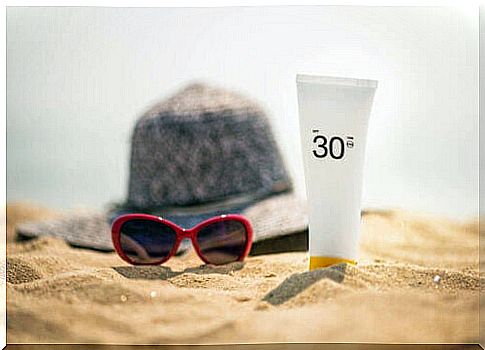
Having sunscreen is essential, in summer and throughout the year. Dermatologist associations recommend their use when exposed to the sun directly and especially in groups at risk.
Sunscreen reflects radiation or absorbs it to prevent it from reaching the skin. The unit of measurement used for this is the SPF sun protection factor. All SPFs are related to a percentage of filtration of UV radiation.
In practice, an SPF 30 sunscreen is sufficient in most cases, because it blocks 96.7% of the radiation. It is good to apply a higher protection factor to the face, in children or in people with very fair skin.
Knowing how to apply and maintain sunscreen is essential. Avoiding solar erythema will be easier if the cream is applied evenly to the body and there is a layer of at least 2 milligrams per square centimeter of skin.
Avoiding solar erythema is a good habit
Even if you might think otherwise, protecting yourself from solar radiation is a habit that has repercussions on our future life. By following minimum sun exposure guidelines and using good sunscreens, we can avoid certain types of skin cancer as much as possible.
If you have any doubts about a skin lesion, whether it is a sunburn or a more serious burn, we advise you to consult a doctor. It is better to seek advice on the severity of this injury and act accordingly.






